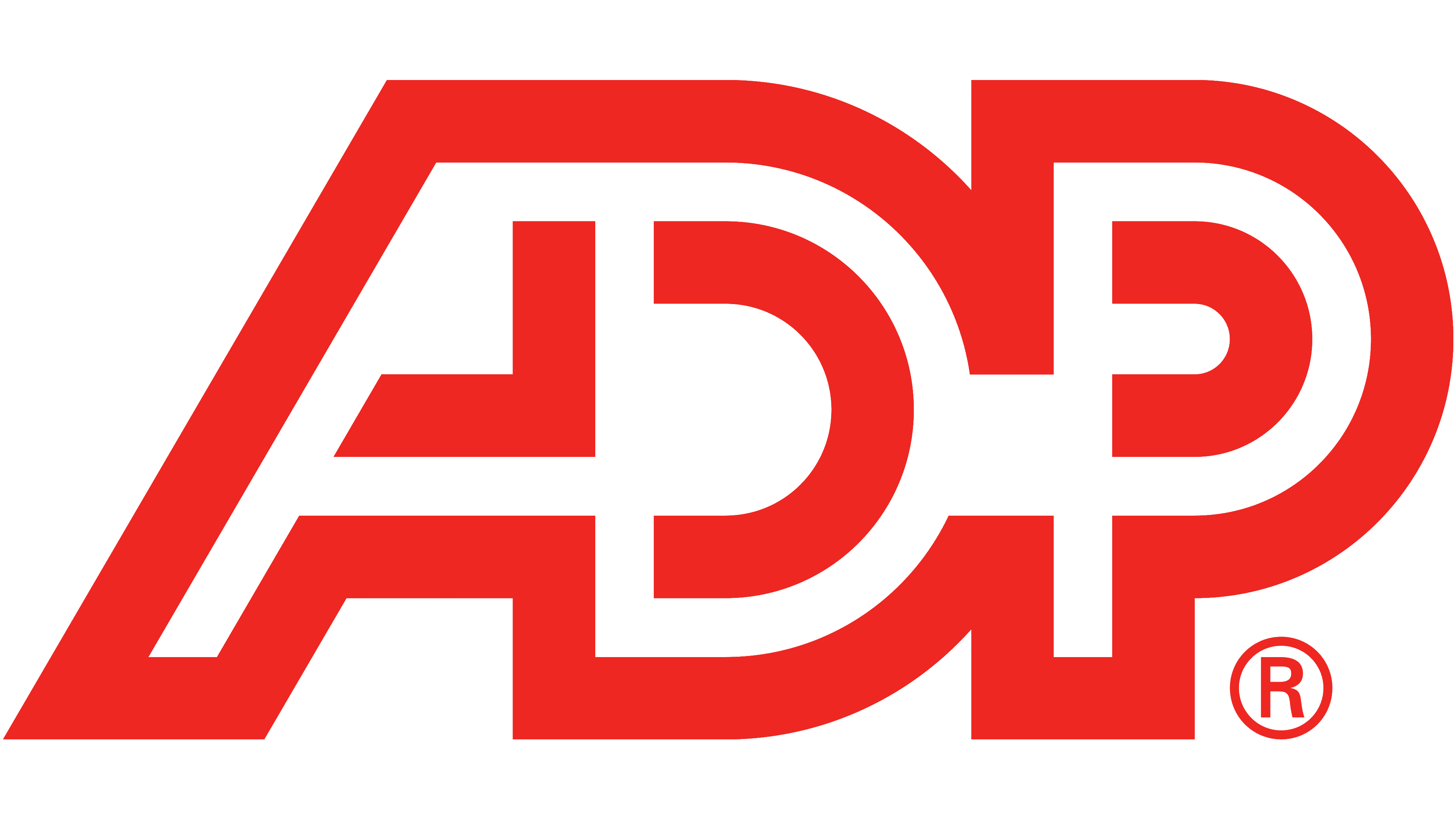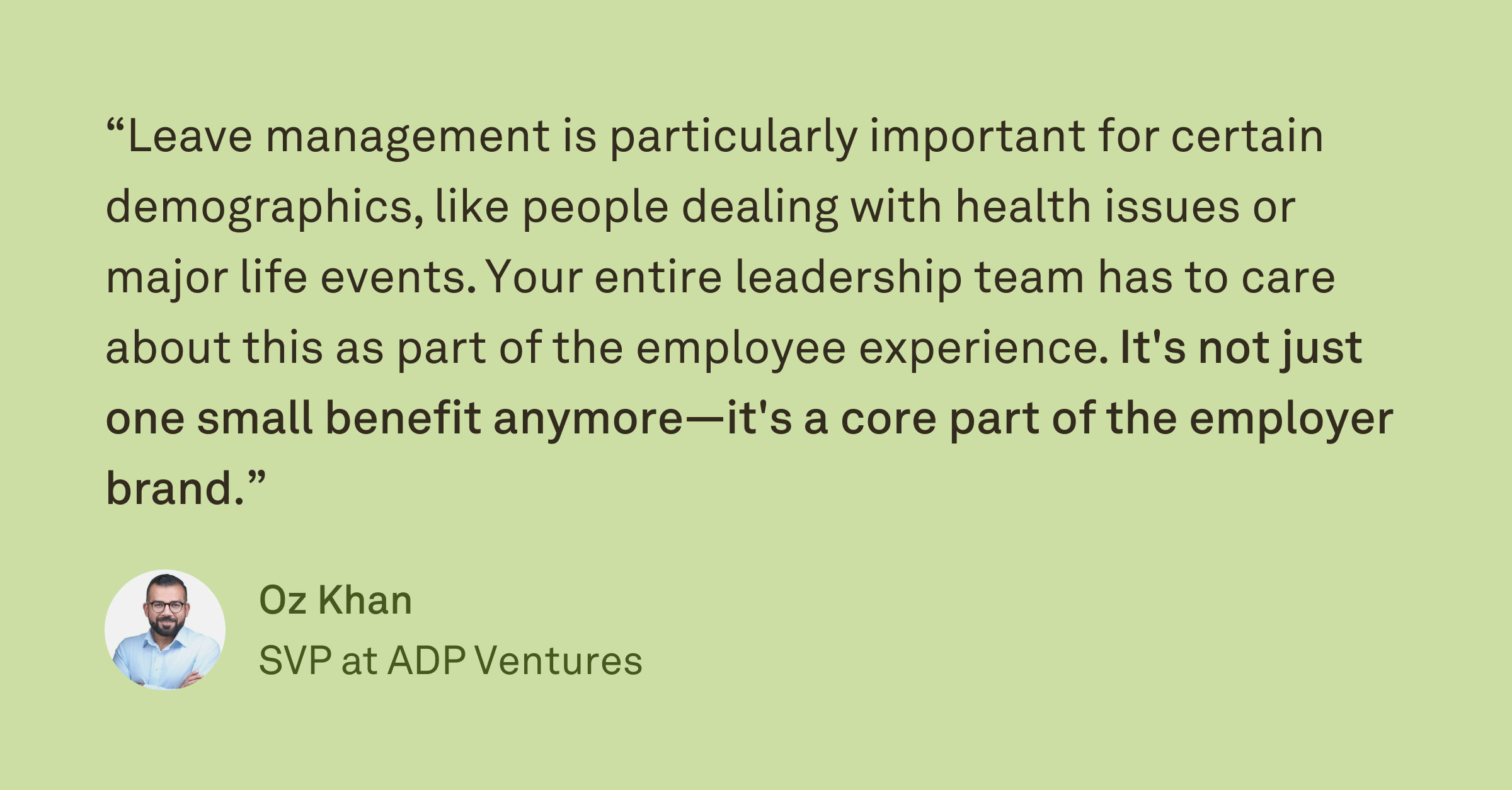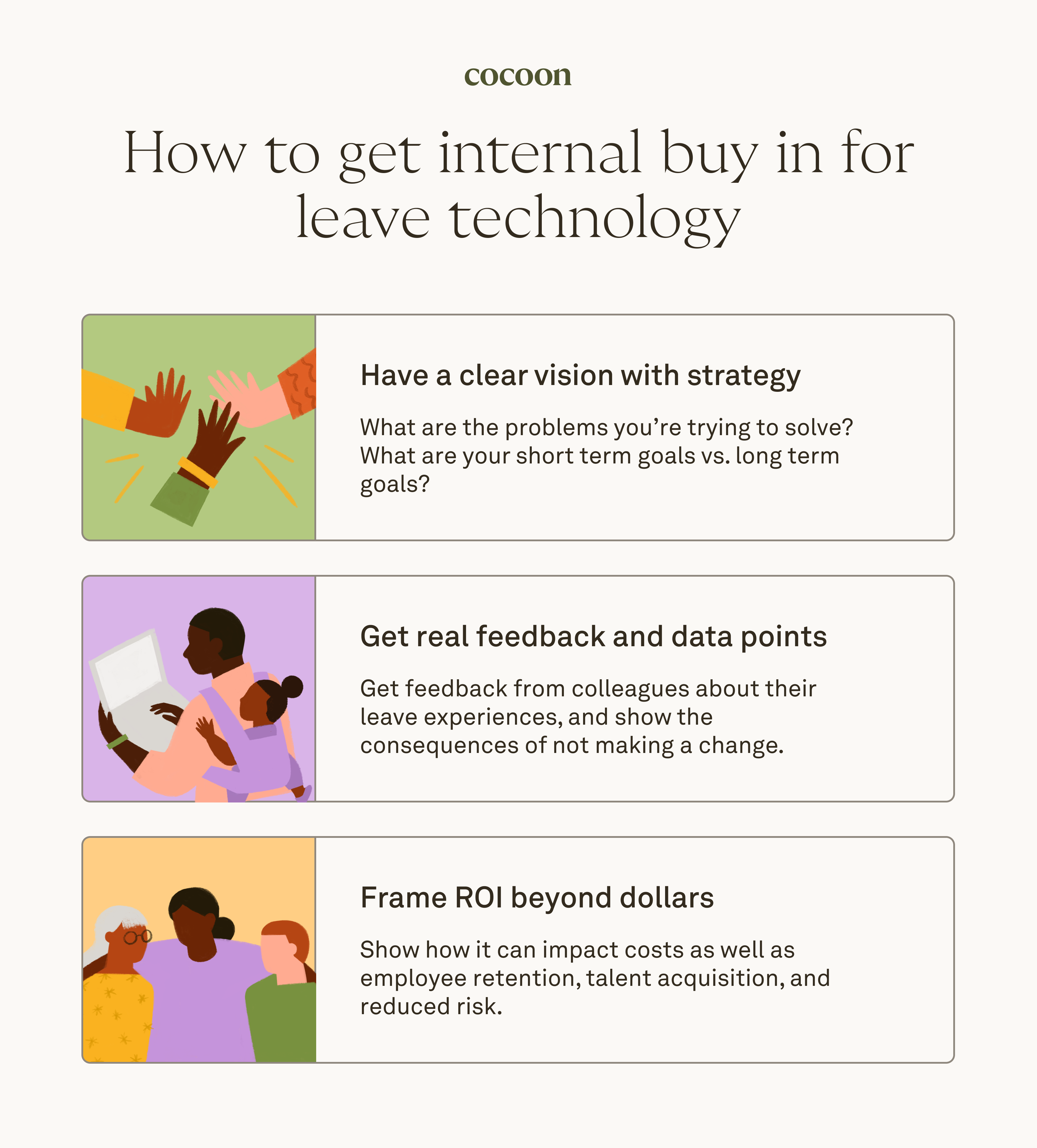
CEO and co-founder


Senior Vice President


Head of Disability, Absence, Life, and Supplemental Health

Panel insights
We’ve been thinking about digital transformation strategy and disruption since our founding, and it’s fundamental to our future too. From shopping to travel to banking, we’ve already seen major disruption and live in a world of convenience. With the rapid onset of AI, there are even more opportunities to continue improving and transforming the leave experience. So what would it take to bring these advances to taking leave?
Our panel discussion at DMEC 2025 was our chance to explore just that. Our co-founder and CEO, Mahima Chawla, and Founding Legal Counsel, Frank Alvarez, shared the stage with industry experts Usman “Oz” Khan (Senior Vice President at ADP Ventures) and Jess Vanscavish (Head of Disability, Absence, Life, and Supplemental Health at Guardian). With diverse perspectives and almost a century of experience combined, this recap surfaces insights and actionable to-dos to help you embrace a digital transformation sooner rather than later.
Key takeaways
- Now is the time to embrace a digital transformation for leave management: the technology is here and employees are coming to expect it across the tools and experiences in their personal and professional lives.
- Manual processes involved in managing leave are time-consuming for employees and People teams, on top of leaving lots of room for error and a negative employee experience.
- To get decision-makers on board in this transformation, humanize the problem and the implications when leave goes wrong. Frame ROI around not just the cost savings but also employee retention, talent acquisition, and reducing risk.
- Best takeaway quote: “Your entire leadership team has to care about leave management as part of the employee experience. It's not just one small benefit anymore—it's a core part of the employer brand.” — Oz Khan, Senior Vice President, ADP Ventures

Why is now the moment for an HR digital transformation?
As our co-founder and CEO, Mahima put it, “why not yesterday?!” Technology has been providing 24/7 access to information, workflow coordination, and real-time communications for a long time—yet leave management is still operating 10-20 years behind the curve. Now with AI, the capabilities keep rapidly evolving, meaning we can do things now that even six months ago we could not.
Both Oz and Jessica seconded this notion. “I think we’re finally reaching a tipping point where we need to address this,” Oz agreed. “With our research showing 1 in 10 employees will take leave in a given year, it’s something you’re likely going to address—even in the mid-market and SMB space.”
Layered with the legal compliance pieces, individual state laws, and constant regulatory changes, it’s too much for any person to keep up with, and precisely where automation can step in. This piece especially struck a chord with the audience, who felt like using AI to keep track of laws was a missed opportunity.
What could the future of leave management look like?
For Jessica, the future of leave should be, “a seamless experience that’s all event-based. At minimum, I would expect that when a leave taker needs to submit documentation, they can upload it on the spot. They’re not getting papers for somebody to review.” Mahima took it even further. “Once a person hits submit, their claims would get filed automatically, information goes to their insurance carrier, to supplemental benefits, to the state. Employees can focus on their life instead of doing all the administrative work along the way. Employers don’t need to manually calculate eligibility, payroll, or tracking compliance. The system should take care of anything work-flow oriented, objective tasks, and documentation.”
Oz and Frank noted that better leave management would bring consistent and positive employee experiences. “We talked to a lot of people, from HR professionals to employees, who had gone through leave experiences with one-to-one representatives,” explained Oz. “We found that the experience would be very inconsistent. The number of touch points that employees would have to interact with was nuts. When HR isn’t getting stuck in these paperwork processes, that leaves time for the more important work of actually supporting employees better.”
“Consistency comes from process, and how you educate people to respond to situations,” said Frank. “If you don't have the knowledge or bandwidth to train people to handle these situations consistently, it becomes challenging. Technology can help with consistency while still doing the individualized assessment that's required.”
Disrupting leave management also means still playing nicely with existing systems, and integrating them together, in fact. That way, accurate information flows freely in real time through HRIS, payroll, benefits, etc. and doesn’t need to be manually submitted or re-verified.

The ROI of digital transformation goes beyond dollars
Most organizations are no strangers to these technological advances, but the tough part is getting internal buy-in and navigating this conversation with decision-makers. Our panelists spelled out various ways to frame the ROI conversation to have more nuanced conversations.
Frank offered three concrete steps to approach decision makers holding the purse strings:
- Have a clear vision with a strategy. What are the problems you’re trying to solve? What are your short term goals vs. long term goals?
- Get feedback from colleagues about their leave experiences to get real examples and data points for what you're trying to transform, and show the consequences of not making a change.
- Frame ROI in terms of how it can impact costs as well as employee retention, talent acquisition, and reduced risk. Replacing employees is expensive as is recovering from a compliance error.
Jessica encouraged organizations to “have clarity and find a provider that shares your vision and can continue to grow and scale with you. But be open, because technology is changing so rapidly, so the competition is always improving.”
Oz re-emphasized the importance of a great employee experience. “Leave management is particularly important for certain demographics, like people dealing with health issues or major life events. Your entire leadership team has to care about this as part of the employee experience. It's not just one small benefit anymore—it's a core part of the employer brand.”
Mahima noted how it’s important to make the argument human. “Walk the decision-makers through the employee experience and how much is at stake. Show them the impact it has on a leave-taker’s life.” The difference between taking a leave that’s supported by a great team and powerful, modern technology versus one that’s not is a rapidly-expanding gap that plays into your bottom-line, retention, recruitment, and employer brand.
The bottom line for bringing leave management into the future, today
The intimidating and exciting thing about the power of technology is that it’s always changing. On the positive side, this means it can be adapted to more types of organizations, industries, and individual employees across ever-changing regulations, policies, and even geographies. The fact that the technology we need for this HR digital transformation doesn’t live in some faraway sci-fi future, but rather behind a wall of some organizational resistance is a barrier we can clear—something our panelists from across the industry agreed upon. Though DMEC is behind us, the future of leave management is nigh. Act on these insights and see if your organization is truly providing a modern leave experience with our quiz, and see the future in action with our leave planning tool.
